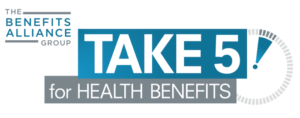The pandemic has put an existential spin on labour shortages across all sectors, challenging employers to be more creative and customized with attraction and retention strategies.
Dubbed “The Great Resignation” south of the border, the pandemic literally and figuratively hit the pause button for many employees. “People across all generations are asking themselves about quality of life,” says Therese Van Es, president and chief people leader, Ladder HR Solutions in London, Ontario. “Most particularly generation Xers are starting to think, ‘Hang on, I’ve had time to reflect and to not have to run around like crazy. I don’t want to have to work that hard again’.”
In Ontario, “employee turnover is probably double what it would normally be. We’re working more and more with clients to build tools and strategy to curb the exodus of employees, as well as attract staff,” says Gord Hart, president and CEO, Selectpath Benefits & Financial in London, Ontario, member firm of the Benefits Alliance Group.
A report by the Business Development Bank of Canada states that “mobility between sectors has risen significantly.” After surveying workers in May 2020 and June 2021, it found that 20% of those who had lost their jobs had changed their fields of employment.
The fact that this is happening as the economy ramps back up puts even greater pressure on employers. “One of my main focuses right now is retaining my people. I am doing whatever I can to make sure everyone is happy enough not to want to go anywhere else,” says Van Es.
In provinces with resource-based, cyclical economies such as Alberta and Saskatchewan, employers are more focused on wooing back workers who left during the economic downturn before the pandemic. Elevated turnover among current workers is not so much of a factor—at least, not yet. However, now that pandemic-related government subsidies are over and the demand for labour steadily intensifies, “we anticipate more people will be reassessing their future, whether to return to their employer or even to the career that they’re in,” says John Goode, partner, Belay Advisory in Edmonton, Alberta, member firm of Benefits Alliance Group.
Managers who manage
HR experts are advising clients to put a laser focus on retention strategies. An essential first step is to equip managers to manage. “The pandemic has really helped drive home the fact that leadership has to revolve around supporting the teams who support the business,” emphasizes Van Es.
In the new reality of hybrid workforces, leadership includes fostering self-managed teams where employees have more freedom around decision-making to execute tasks, which leads to greater levels of engagement. At the middle management level, that translates into one-to-one relationship-building and supports for staff, where managers have more autonomy to make decisions around training, rewards, team-building, flexible work arrangements—whatever it takes to sustain engagement at the individual level.
“We’re at a place where we have to understand people as they are and work with them to retain them,” says Van Es.
While personalization is increasingly valued, it’s also worth remembering that organizational success is a universal motivator—and an obvious win for employers. “Staff at all levels want to understand how the business works and they want to help grow the business. Business owners can capitalize on that,” notes Van Es.
To make space for managers to manage, investments in technology, training or consultants (e.g., to help strategize, improve processes, etc.) may be required. In today’s labour market, better those costs than the cost to replace talent. “If the fundamental issue is that we can’t attract talent to backfill the losses, then making the investment to avoid the loss is the right investment,” says Hart.
ESTIMATES from HR experts in the U.S. put the cost of replacing an employee at 1.5 to 2 times the employee’s salary, which represents recruitment, training, reduced productivity and loss of engagement from other staff. In a more volatile market, when there are more voluntary exits and positions remain vacant for months at a time, that last cost regarding impacts on remaining staff can be much higher and trigger a vicious cycle: the greater the extra burden on remaining staff, the higher the risk that they, too, will leave.
The right path
Reorganization may be required as part of the management piece. And that may mean current managers moving on to a different career path.
But first, organizations need to define possible career paths. “Too many companies don’t do that, so people think they have to be a manager in order to advance. But they may not really want to be in a leadership position. They may even find that they hate it. That doesn’t bode well for their ability to lead, and you lose the skills or expertise that made them good employees,” says Van Es.
Instead, organizations in all sectors can define two tracks for advancement: the leadership track and the senior technical track. “Make sure that they’re presented as equal in importance and people know they can choose the path that is best for them,” advises Van Es.
While these career tracks are already more likely in the skilled trades, where labour shortages were acute before the pandemic, many other types of business—from professional to retail and manufacturing—can be much more intentional about providing these distinct paths for advancement, she adds.
A bigger pool
The old adage, “Hire for attitude, train for skill,” is returning as a mantra. “More organizations are stepping in to hire less qualified workers and train them,” says Hart.
In its October 2021 report, “The Skills Imperative: Workforce Development Strategies Post-COVID,” the C.D. HOWE INSTITUTE points to the untapped potential to deepen the talent pool through better efforts to train low-skilled and young adults (including youth in highschools). “Older workers are another population group that might receive less support from employers to reskill or upskill,” it states.
The report includes detailed charts on public-private programs for skills development, funded by federal and provincial governments. More are coming, as the 2021 federal budget included $2.5 billion over five years in new training programs, most in partnership with employers.
Canadians living with disabilities could represent another untapped talent pool. An October 2021 poll by the ANGUS REID INSTITUTE found that 40% of Canadians living with disabilities say employers are bad or terrible when it comes to hiring people with disabilities (leaving 38% who feel positive and 23% who don’t know). This increased to 55% among those aged 18 to 34.
Growing worth of benefits
Last but certainly not least, employee health benefits continue to serve as table stakes when it comes to attraction and retention. The pandemic has boosted their rate of evolution—as well as their affordability.
Many employers’ bottom-line profitability ended up being higher than before the pandemic due to significant reductions in traditional expenses, explains Goode. As a result, initial thinking around having to reduce benefits quickly changed direction. “Many of our clients are looking beyond what they currently have, based on the new and evolving needs of their workforce.”
As well, the offerings themselves are more affordable, in part due to technology that enables scalability and improves uptake in an increasingly digital world.
The pandemic’s repercussions on personal health and the public healthcare system will take months or years to address. Anything that plan sponsors can do to help close gaps and get people back on track will be valued. That boils down to improved access to care (through offerings such as virtual services, navigation support and increased maximums for mental health services) and more targeted, customizable care (through flexible benefits plans, non-taxable and taxable spending accounts, and specialized offerings such as substance use programs).
“We’re seeing a dramatic shift to flexible benefits regardless of employer size,” notes Hart.
“The pandemic really shone a light on the importance of employee health and wellness. An investment in these offerings is relatively inexpensive compared to the potential return on investment,” says Goode.
Consistent communication is the last piece of the puzzle. “Engage the workforce around your benefits plan. We think people know what benefits are and how they work, but most don’t,” says Hart.
Perhaps most important, proactive communications—using simple, compelling content and avoiding jargon—can help persuade employees to stay put. “Benefits signal a caring environment for the workforce. That’s especially meaningful today,” summarizes Hart.

This article is part of The Benefits Alliance Take 5 for Health Benefits. Take 5 is a quarterly initiative that provides a deeper look a the employee benefits space by providing examples, research and case studies on what’s working for employers in Canada.

